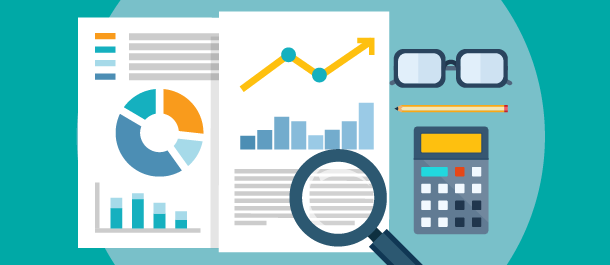
Reporting draws a line in the sand. You're either on the side with the people who love diving deep into data, building out spreadsheets and poring over numbers, or you're on the side with the people who all shuddered at the word "spreadsheet."
Regardless of which camp you're in, one thing is abundantly clear: we all need to buckle down and get our end-of-year reporting done! So let's go on a journey together and take a look at the essential data we need to consider — and the best practices we should use in approaching it.
Where do we start? Why, at the beginning of last year of course!
Evaluate the Previous Year
What was your marketing strategy at the beginning of last year? Sit back for a minute and consider the goals, campaigns and approach you had carefully planned out.
As the year progressed, what did you execute on and complete over the course of the year? Consider what went well. Which initiatives moved the needle and generated revenue? Which initiatives increased awareness of your brand?
Now consider what didn't go well. This part of the exercise is every bit as important as evaluating what did, but it's not always as pleasant. Why didn't these initiatives go well? Where were the gaps in the approach?
 If you think that's not quite enough data to go on, you're right. Now it's time to conduct a funnel analysis. This is arguably one of the most important reports you can run since it shows the health of the funnel and your prospects' progress through the sales cycle.
If you think that's not quite enough data to go on, you're right. Now it's time to conduct a funnel analysis. This is arguably one of the most important reports you can run since it shows the health of the funnel and your prospects' progress through the sales cycle.
Most marketers track the visit and lead stage of the funnel. Some take it all the way to SQL. We're here to let you in on a secret: you should be tracking all the way to revenue. That means visits, leads, marketing qualified leads, sales qualified leads, opportunities and customers. This approach will give you the most comprehensive view of your funnel and allow you to build a more robust strategy.
Now it's time to compare. Ideally you've been conducting a funnel analysis on a regular basis. If not, don't worry, because chances are you have the data to build that report out now. How do the reports compare to one another? Is your funnel healthier at the end of this year than at the end of the previous year? Is there measurable growth?
The analysis may reveal gaps that you can build goals around for the upcoming year.
Utilize Reports to Make Strategic End-of-Year Decisions
Let's say your funnel gap analysis reveals that you have a higher lead-to-MQL conversion rate, but your SQL rates have dropped consistently throughout the year. By evaluating these changes we can begin to evaluate the cause of the SQL gap.
In running this report, you may come to the conclusion that the MQL criteria is qualifying unqualified leads. This would explain the higher rate of MQLs and the drop in their further converting to SQLs. Without running this type of report it would be difficult to identify and make informed decisions to improve your marketing strategy.
Now that you've reflected on your past year's strategy and identified successes and gaps in your marketing efforts, you can begin setting goals for the year ahead. Consider building on your successes further and doubling down on highly effective initiatives. Begin to construct your strategy around filling the gaps in your funnel.
Set Yourself Up for Ongoing Success
What are the key metrics that will be most valuable for you in the next year? Think about broad goals like revenue contribution and generating leads, but also consider goals specific to some of the challenges you discovered. Choose key metrics you should be reporting on each month to track how well you're working towards attaining your goals. While end-of-year reports are more of a general overview of the company's marketing efforts, monthly and quarterly reports are more tactical.
The whole idea behind reporting is to see how you did and to come up with actionable strategies that improve your future marketing efforts. Download our Funnel Gap Analysis to get a head start!
Guido Bartolacci
Guido is Head of Product and Growth Strategy for New Breed. He specializes in running in-depth demand generation programs internally while assisting account managers in running them for our clients.




